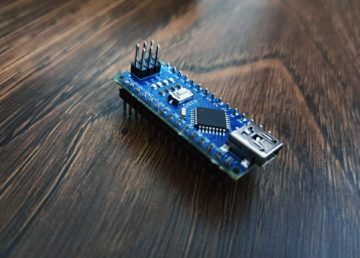摘要: There’s been an ongoing trend of people wanting increasingly capable and smaller tech devices. Those desires have spurred progress in a segment of artificial intelligence (AI) called TinyML. Here’s a look at how it could enhance future possibilities.

▲來源:dataconomy.com
WHAT IS TINYML?
It’s already widely known that processing data directly on a device speeds things up compared to sending the information to the cloud. TinyML centers on optimizing machine learning models so microcontrollers on endpoint devices can run them.
Some of these microcontrollers are only about as large as a grain of rice. Another crucial point is that they only consume milliwatts of power. These parts are vital for helping products ranging from televisions to medical devices operate. So, the use of microcontrollers is not a new idea.
However, people have only recently explicitly started developing machine learning models for these embedded systems. That trend created the movement toward TinyML.
WHY DOES USING TINYML MAKE SENSE?
What are some of the main benefits of running machine learning models on microcontrollers? For starters, TinyML allows using them independently of the internet since the processing happens locally on the device rather than in the cloud.
TinyML also brings down the development cost because the prices for the hardware are significantly less expensive than what’s used in traditional machine learning projects. The reduced upfront prices could make people who are interested in getting firsthand experience without significant investments. For example, the primary hardware used in a TinyML tutorial for a voice-recognition model costs approximately $30.
The smaller form factor associated with TinyML hardware also brings battery life and power usage-related advantages. For example, a coin-style battery offers enough energy to run a TinyML image recognition model continuously for a year.
Finally, the on-device processing improves overall security and privacy. For example, one analyst brought up the possibilities of using TinyML to track a person’s blood sugar levels or ensure a sleeping baby stays conscious without uploading the data to a third-party provider like Google or Apple. Health trackers are already popular, but some people worry about entrusting their information to a giant tech company.
TINYML MAKES MACHINE LEARNING MORE ACCESSIBLE
One of the game-changing aspects of TinyML is that it increases access to the tools necessary to run powerful machine learning models, which is becoming increasingly crucial for businesses across industries.
One CEO, Bob Janacek of API company DataMotion, explained in an interview that more customers are interested in using machine learning and associated technologies in their everyday business operations:
“We have to continually serve the needs of our customers,” Janacek said. “Our customers are emphasizing security and compliance, ease of use, and superior experiences for their clients. They’re also looking at machine learning, artificial intelligence, and natural language processing.”
Before TinyML emerged as an option, people who built machine learning solutions often had to work around limitations. It takes time to send and process data in the cloud, and it might be necessary to change a smart device’s battery several times a year.
RESEARCH ILLUMINATES TINYML’S POTENTIAL
People should expect that TinyML will change machine learning best practices by encouraging more developers to view it as a viable option. Research is also underway to use the cloud with TinyML to compress existing machine learning models. Doing that opens opportunities for them to run on sensors. Another area of research involves using TinyML to address network bandwidth issues caused by enormous amounts of raw data.
Smart algorithms could refine the quality level of the data, reducing any previous issues that caused backups. As machine learning became more popular, people increasingly realized it could help them find patterns in information. Statistics anticipate the predictive analytics market reaching $10.95 billion by the end of 2022.
Besides helping spot potential issues before they happen, TinyML can help researchers determine the best combination of factors to give the best results. For example, it can take only 12 months to test new drugs if scientists use hardware and TinyML rather than animals.
The creation of new benchmark tests for TinyML should also expand research and development in this area. The MLPerf Tiny Inference test suite gauges power consumption and performance. Measurements in milliseconds assess latency, while micro-Jules check power consumption during four machine learning experiments. Getting low measurements for both is ideal.
AN EXCITING FUTURE FOR MACHINE LEARNING
As these examples show, TinyML will help push machine learning forward and show people how they can use it in ways previously considered impossible. There’s a growing desire for smaller yet powerful tech gadgets. If they feature microcontrollers and TinyML algorithms, such projects are realistic rather than far-fetched.
轉貼自: dataconomy.com
若喜歡本文,請關注我們的臉書 Please Like our Facebook Page: Big Data In Finance


留下你的回應
以訪客張貼回應